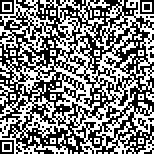| 引用本文: |
-
何东明,邓渠成,邹昀,邓超冰,许桂苹,王晓飞,苏荣.基于α-截集的三角模糊数-贝叶斯模型在刁江水质评价中的应用[J].广西科学,2017,24(2):212-218. [点击复制]
- HE Dongming,DENG Qucheng,ZOU Yun,DENG Chaobing,XU Guiping,WANG Xiaofei,SU Rong.Application of Water Quality Assessment about Diaojiang River based on α-cut Triangular Fuzzy Number-Bayesian Model[J].Guangxi Sciences,2017,24(2):212-218. [点击复制]
|
|
| |
|
|
| 本文已被:浏览 573次 下载 630次 |

码上扫一扫! |
| 基于α-截集的三角模糊数-贝叶斯模型在刁江水质评价中的应用 |
|
何东明1,2, 邓渠成3, 邹昀1, 邓超冰2, 许桂苹2, 王晓飞2, 苏荣2
|
|
|
| (1.广西大学化学化工学院, 广西南宁 530004;2.广西壮族自治区环境监测中心站, 广西南宁 530028;3.澳大利亚昆士兰大学地球与环境科学学院, 布里斯班4072) |
|
| 摘要: |
| [目的]探讨一种科学、客观的水质大数据的综合评价方法,为刁江流域重金属污染治理提供客观数据。[方法]基于α-截集的三角模糊数-贝叶斯模型,选取刁江的5个监测断面的主要污染因子(Pb、Cd、As)进行分析,全面评价刁江水质状况。应用α-截集处理监测结果的三角模糊数,并运用到贝叶斯模型中,计算刁江水质综合得分,最终确定水质类别。最后将本研究模型的评价结果与传统贝叶斯模型、三角模糊数模型及年均值模型的评价结果进行比较。[结果]本研究模型评价结果显示,2015年刁江A、D断面水质达到Ⅱ类水标准,E断面水质达Ⅰ类水标准,B、C断面水质介于Ⅱ、Ⅲ类水之间,对各级的隶属度分别为(0.7517/Ⅱ,0.2483/Ⅲ)、(0.7449/Ⅱ,0.2551/Ⅲ),水质总体良好,环境风险可控。传统贝叶斯模型与本研究模型的评价结果接近,三角模糊数模型次之,均值模型在水质不稳定时相差较大。[结论]本研究模型兼具三角模糊数模型的不确定性、传统贝叶斯模型的决策性及均值模型在评价稳定水质中的优越性,既能准确评价水质又能将水质的不确定性表达得更为全面、切合实际。 |
| 关键词: 刁江 水质评价 三角模糊数 α-截集 贝叶斯 |
| DOI:10.13656/j.cnki.gxkx.20170216.001 |
| 投稿时间:2016-10-09修订日期:2016-10-19 |
| 基金项目:广西自然科学基金重大项目"西江流域水环境重金属污染机制与调控"(2013GXNSFEA053001)资助。 |
|
| Application of Water Quality Assessment about Diaojiang River based on α-cut Triangular Fuzzy Number-Bayesian Model |
|
HE Dongming1,2, DENG Qucheng3, ZOU Yun1, DENG Chaobing2, XU Guiping2, WANG Xiaofei2, SU Rong2
|
| (1.College of Chemistry and Chemical Engineering, Guangxi University, Nanning, Guangxi, 530004, China;2.Guangxi Environmental Monitoring Centre, Nanning, Guangxi, 530028, China;3.School of Earth and Environmental Science, University of Queensland, Brisbane, 4072, Australia) |
| Abstract: |
| [Objective] This paper discussed a comprehensive evaluation method of scientific and objective water quality data, and provided objective data for heavy metal pollution control in Diaojiang River.[Methods] Based on α-cut triangular fuzzy number-Bayesian model, the water quality about Diaojiang river was comprehensively evaluated through numerically analyzing the main pollution factors (Pb, Cd, As) of the five monitoring sections. The monitoring data was treated by the theory of triangular fuzzy number and by α-cut set technique. The categories of water quality about Diaojiang River were determined by calculating the comprehensive scores of the five monitoring sections through the Bayesian model.[Results] The results of this study showed that the section E in 2015 reached water quality standards Grade I, and the sections A and D reached GradeⅡ, the sections B and C were between Grade Ⅱ and Grade Ⅲ and the membership degrees were (0.7517/Ⅱ, 0.2483/Ⅲ)and (0.7449/Ⅱ, 0.2551/Ⅲ)respectively, overall good water quality, environmental risk controllable.[Conclusion] Because the model in this paper was a combination of the uncertainty of triangular fuzzy number model, the decision making of the traditional Bayesian model and the superiority of the mean value model in the evaluation of the stability of the water quality, it could not only accurately evaluate the water quality, but also express the uncertainty of the water quality more comprehensively and practically. |
| Key words: Diaojiang River water quality assessment triangular fuzzy number α-cut Bayesian |
|
|
|
|
|